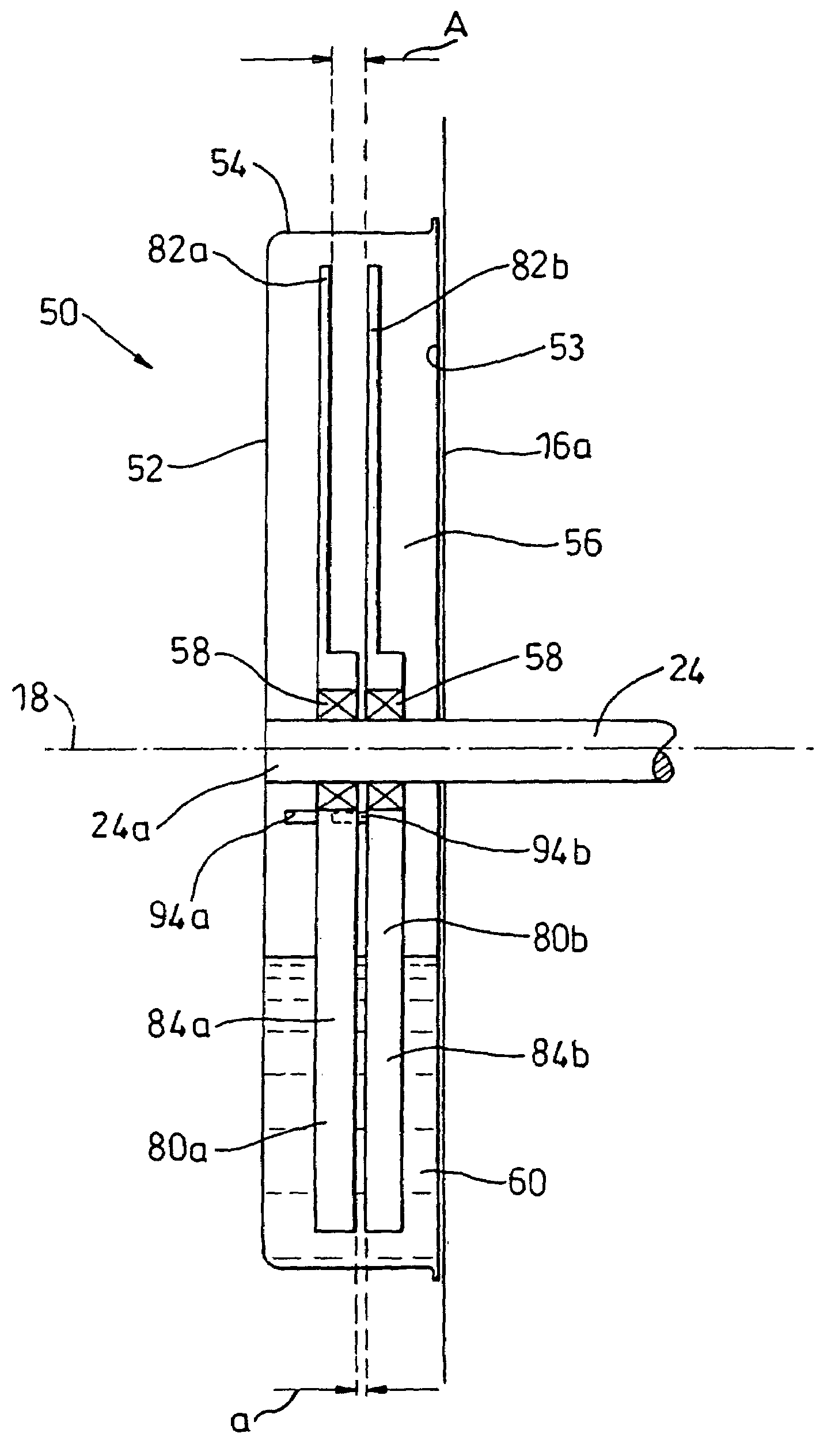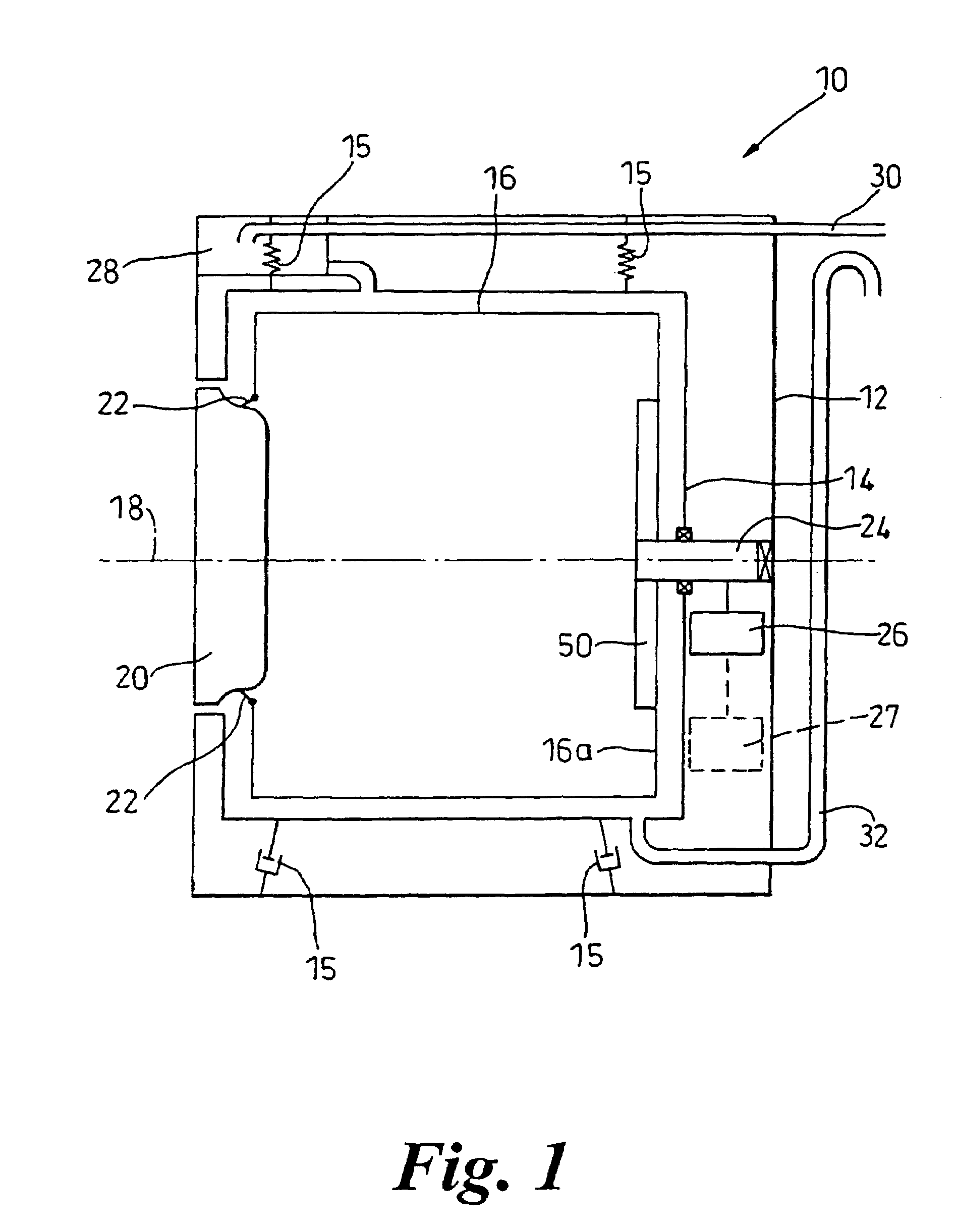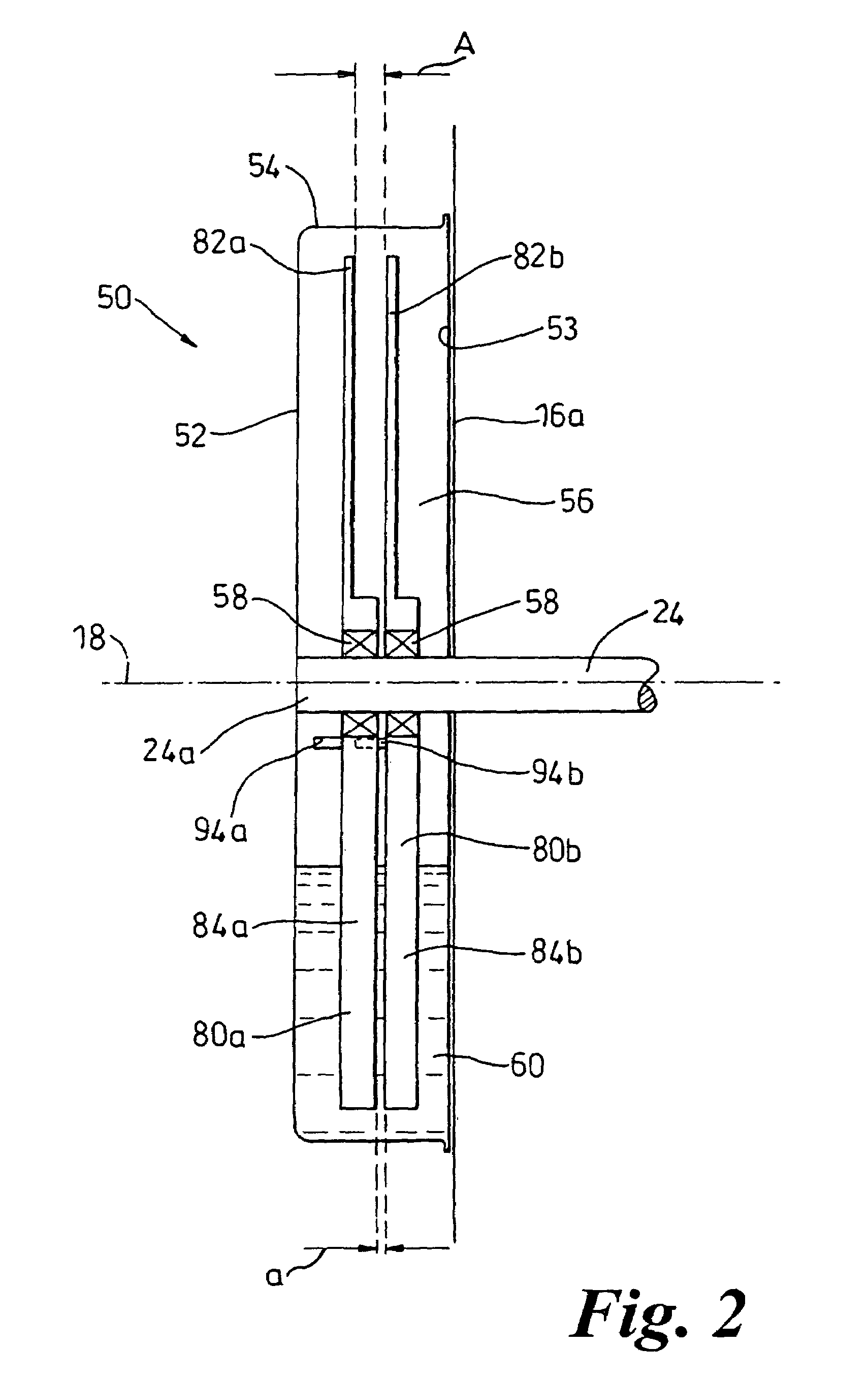Automatic balancing device
a technology of automatic balancing and balancing mass, which is applied in the direction of control devices for washing apparatus, spin-dryers, washing machines, etc., can solve the problems of easy damage, difficult and expensive manufacture of net out-of-balance effect, and known mechanisms by means of which the counterbalance mass can be locked, so as to reduce the excursion of the rotating body and be less susceptible to damage
- Summary
- Abstract
- Description
- Claims
- Application Information
AI Technical Summary
Benefits of technology
Problems solved by technology
Method used
Image
Examples
Embodiment Construction
[0036]FIG. 1 illustrates a typical environment in which an automatic balancing device is useful and desirable. FIG. 1 shows a washing machine 10 having an outer casing 12 and a tub 14 mounted inside the outer casing 12 by way of a system of springs and dampers 15. A perforated drum 16 is mounted inside the tub 14 so as to be rotatable about an axis 18. In this embodiment, the axis 18 extends horizontally although this is not essential. A hinged door 20 is located in the front face of the outer casing 12 in such a manner that, when the door 20 is in a closed position (as illustrated), the tub 14 is sealed in a watertight manner. The door 20 is openable to allow articles of laundry to be placed inside the drum 16 prior to the commencement of a washing cycle to be carried out by the washing machine 10. Flexible seals 22 are also provided between the drum 16 and the door 20 so that moderate movements of the drum 16 with respect to the outer casing 12 can be tolerated.
[0037]The drum 16 i...
PUM
 Login to View More
Login to View More Abstract
Description
Claims
Application Information
 Login to View More
Login to View More - R&D
- Intellectual Property
- Life Sciences
- Materials
- Tech Scout
- Unparalleled Data Quality
- Higher Quality Content
- 60% Fewer Hallucinations
Browse by: Latest US Patents, China's latest patents, Technical Efficacy Thesaurus, Application Domain, Technology Topic, Popular Technical Reports.
© 2025 PatSnap. All rights reserved.Legal|Privacy policy|Modern Slavery Act Transparency Statement|Sitemap|About US| Contact US: help@patsnap.com



